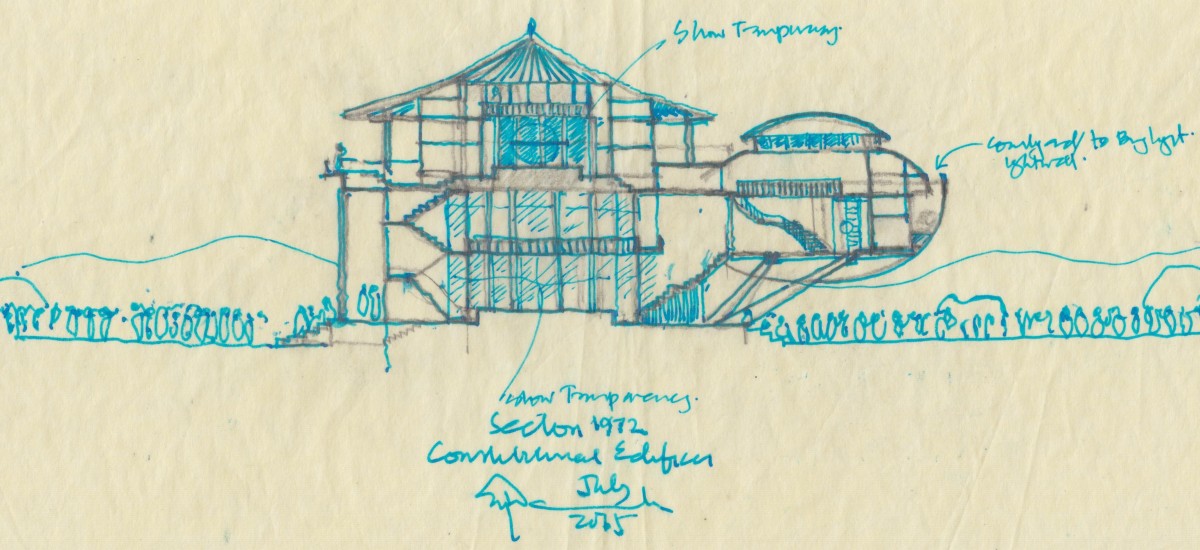“Hope to achieve political settlement through adoption of a new constitution. Don’t judge us by broken promises of past” says Foreign Minister Mangala Samaraweera at UNHRC in Geneva, on 14th September 2015.
The statement in September by Sri Lanka’s Foreign Minister provided a timely frame of reference to appreciate the ‘Corridors of Power’ exhibition. From the security guards at the venue of the exhibition to international constitution building process experts who gathered in Sri Lanka at the time around a workshop on constitutional reform, from students to academics and activists, ‘Corridors of Power’ even before officially opening to the public generated more interest than any project curated by Groundviews and the Centre for Policy Alternatives previously.
Led by the input of Asanga Welikala, in collaboration with Channa Daswatta, ‘Corridors of Power’ through architectural drawings and models, interrogated Sri Lanka’s constitutional evolution since 1972.
The exhibition depicted Sri Lanka’s tryst with constitutional reform and essentially the tension between centre and periphery. The output on display included large format drawings, 3D flyovers, sketches, and models reflecting the power dynamics enshrined in the the 1972 and 1978 constitutions, as well as the 13th, 18th and 19th Amendments.
To our knowledge, nothing along these lines was ever attempted or created before. In addition to the exhibits on display, each day featured a keynote presentation or panel discussion by eminent individuals, around the topic of constitutional reform in general. All the submissions, including the Q&A session, were recorded and are now available online.
Access them as a playlist here, or download each podcast / recording from here.
- Facebook event page
- Lineup of keynote speakers, including those from Government, respondents and panellists
- Note by Curator (Sanjana Hattotuwa)
~
17th September, The challenge of constitutional reform: Mediating change and managing continuity (Keynote)
The process of constitutional reform in Sri Lanka, if only just the 18th and 19th Amendments are taken into account, is deeply problematic. The opposition to the 18th Amendment, in terms of substance as well as the way in which it was pushed through the legislature, was in comparison to the 19th Amendment far more pronounced and widespread. And yet, even with the 19th Amendment, significant concerns around the lack of information in the public domain around the draft bill, the resulting lack of strategic, planned, public consultation or debate and the perplexing inability (or unwillingness) to translate into Tamil and Sinhala in a timely manner the substance of the Amendment is indicative of enduring challenges. Negotiations over substantive and core issues aside, the failure to architect a robust process of constitutional reform seriously risks the needless strengthening of spoilers, and the eventual derailment of the best intentions. How can one manage to secure public trust in a constitutional reform process? What can be done to encourage public interest in issues and considerations that so many see as largely peripheral to more existential concerns? How does a reform process deal with the legacy of the present constitution, and the common law jurisprudence that pre-dates it with the need to reimagine the State, nationhood and citizenship? What is the role of compromise, and at which point does necessary compromise turn into expedient connivance? How can vital substantive issues around the reform process, even if they don’t find direct expression in a new constitution, be publicly discussed, also leveraging the raft of technology tools available today?
- Rohan Edrisinha
- Respondent: Ambika Satkunanathan

